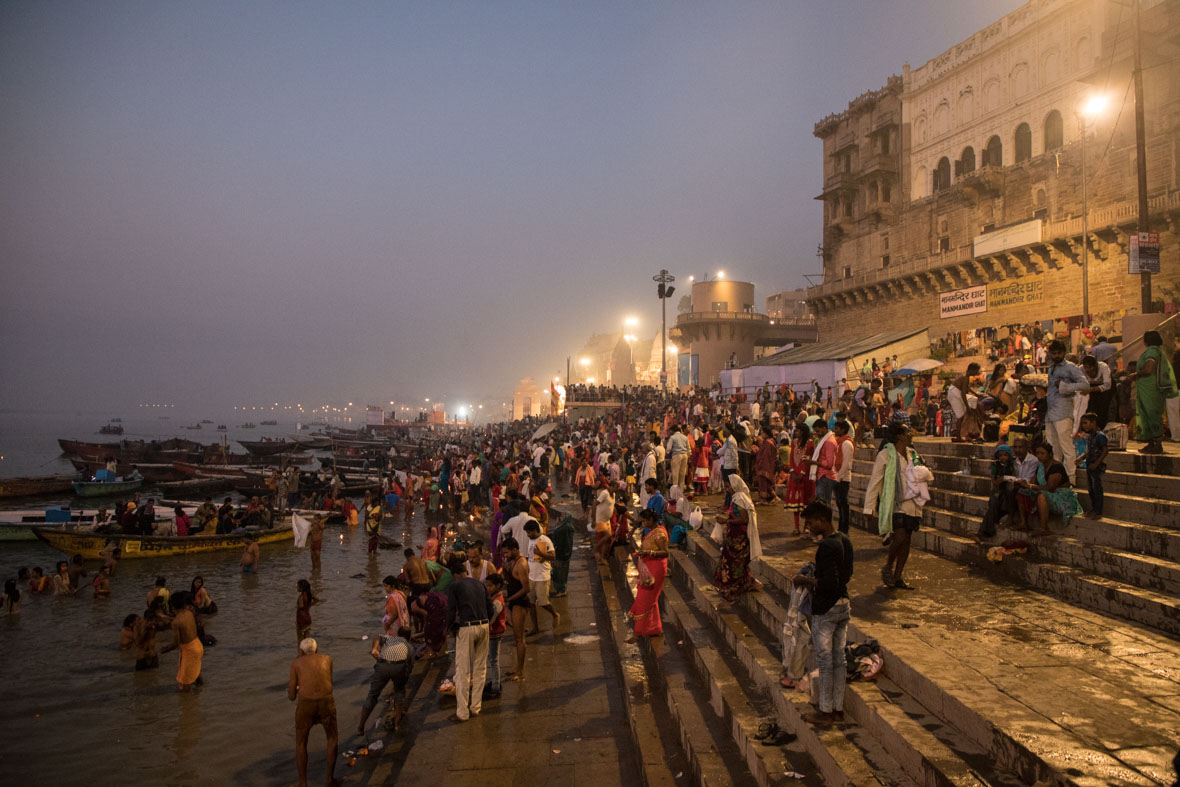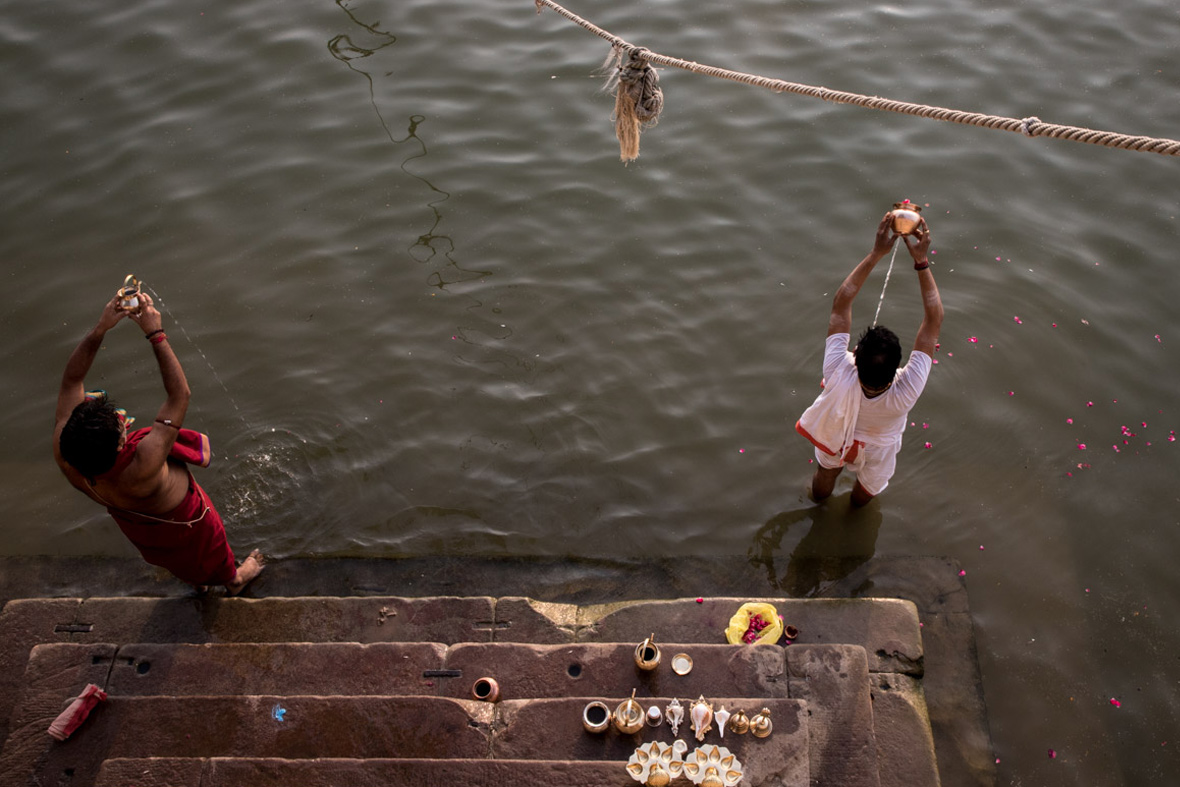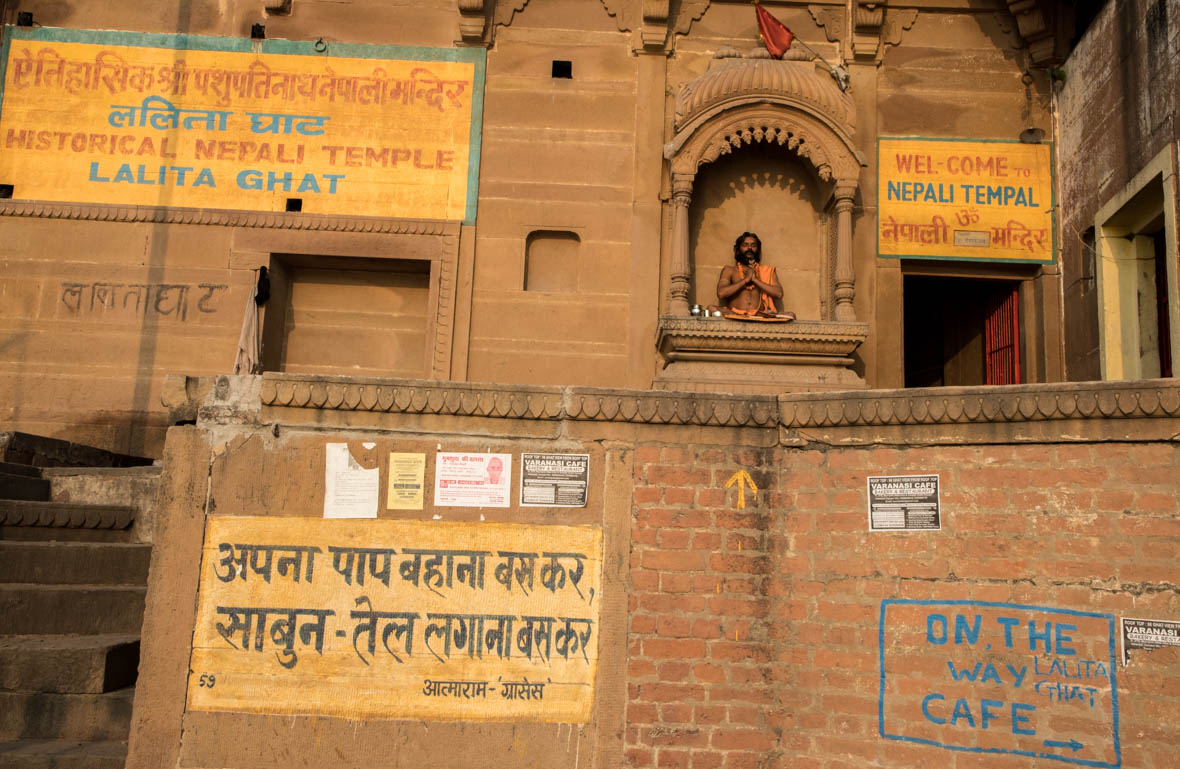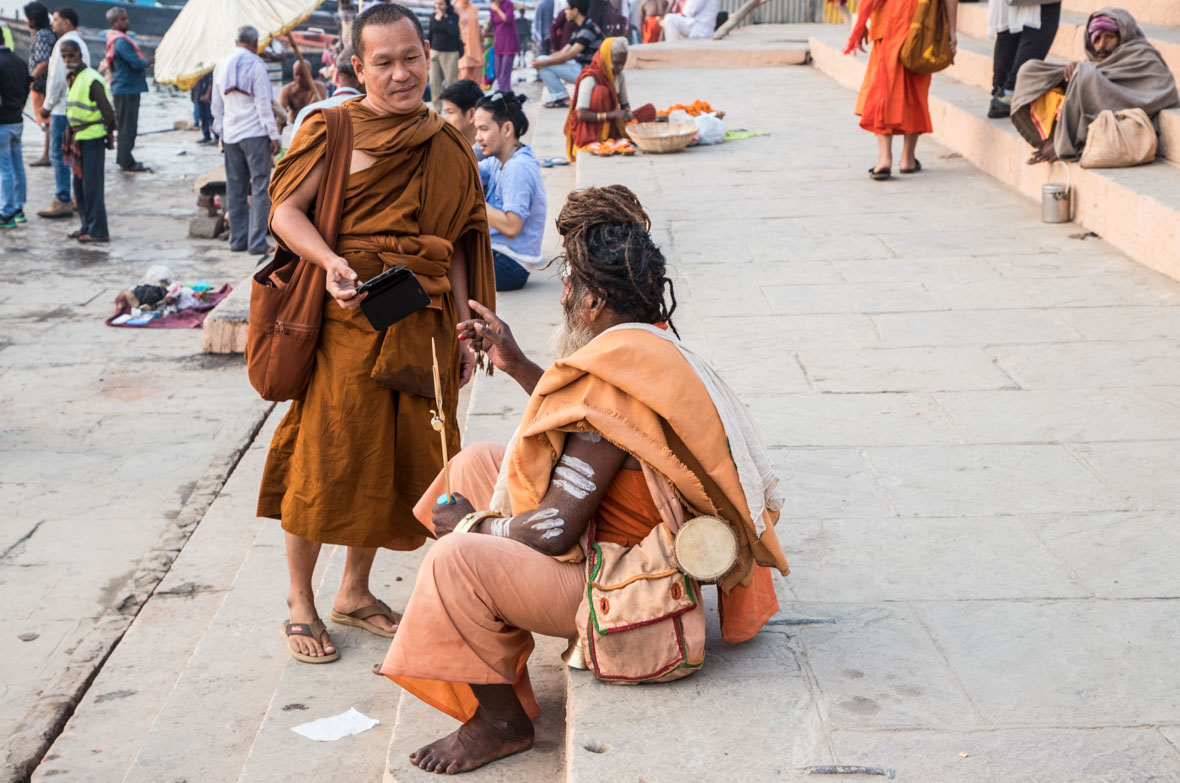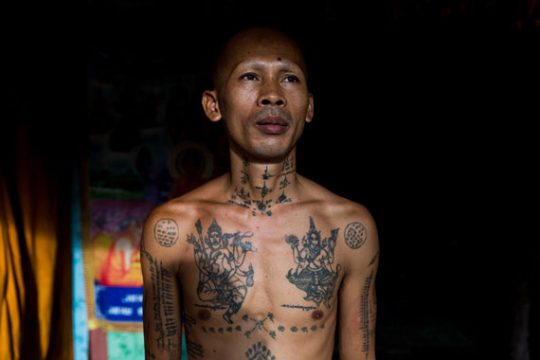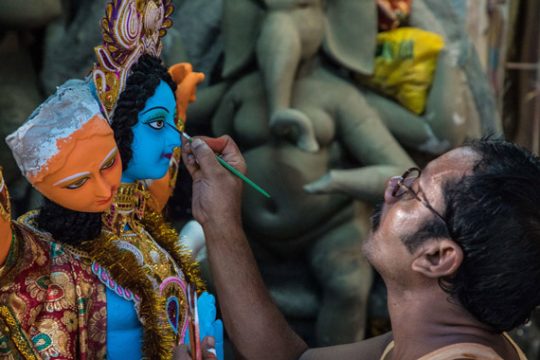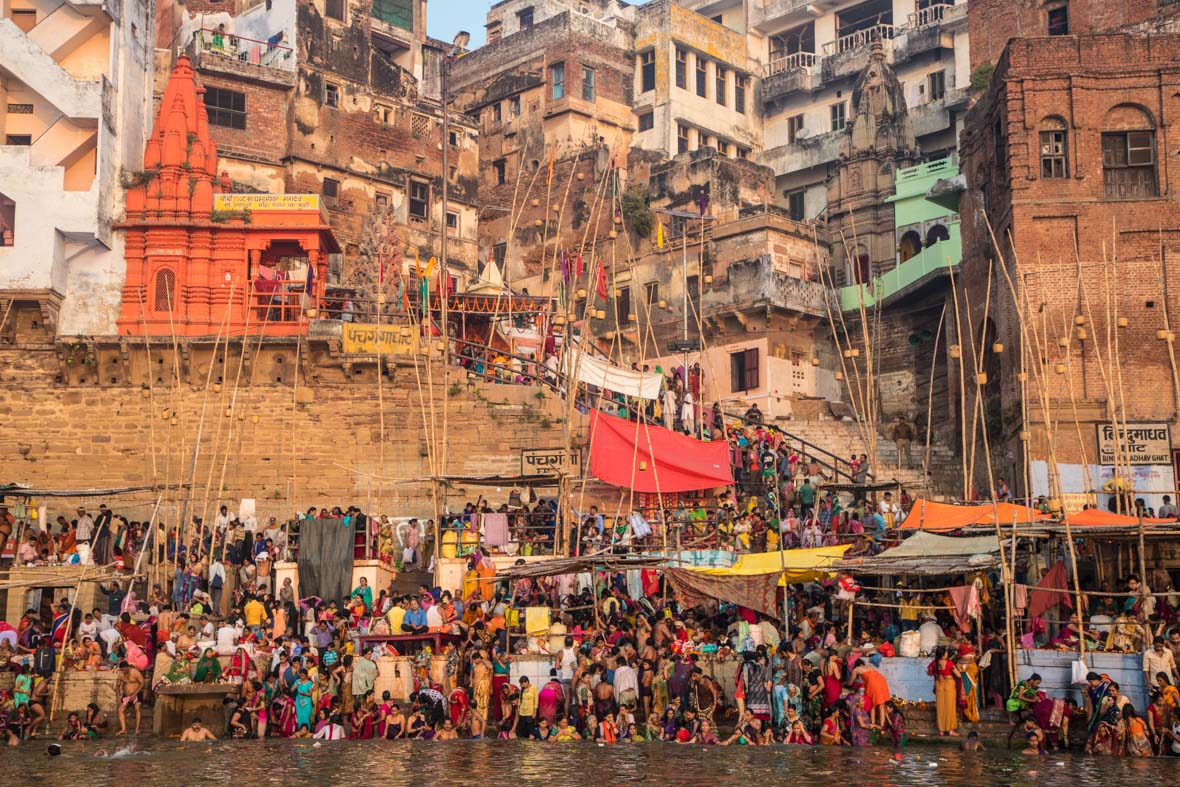
Varanasi, or Kashi as Hindus call it, is regarded as one of the holiest places in India. It’s also one of the oldest continually inhabited places in the world, and in modern times, it continues to receive both devotees and tourists in astounding numbers day after day. While Varanasi holds a reputation of being the spiritual capital of India due to its association with various religious figures, the historical city is most closely associated with Lord Shiva, one of the principal deities of the Hindu pantheon, and who, according to legend, founded the city.
瓦拉纳西(Varanasi),印度人又称之为“卡西”(Kashi),被认为是印度最神圣的地方之一,也是世界上最古老的、持续拥有长居人口的城市之一。而现在,它每天都以惊人的数目接待信徒和游客。由于与众多传奇宗教人物之间的联系,这座城市历来被誉为印度或印度教的精神之都,其中,它和湿婆神(Lord Shiva)之间的联系最为密切。湿婆神是印度教万神殿的主神之一,传说也是这座城市的创造者。
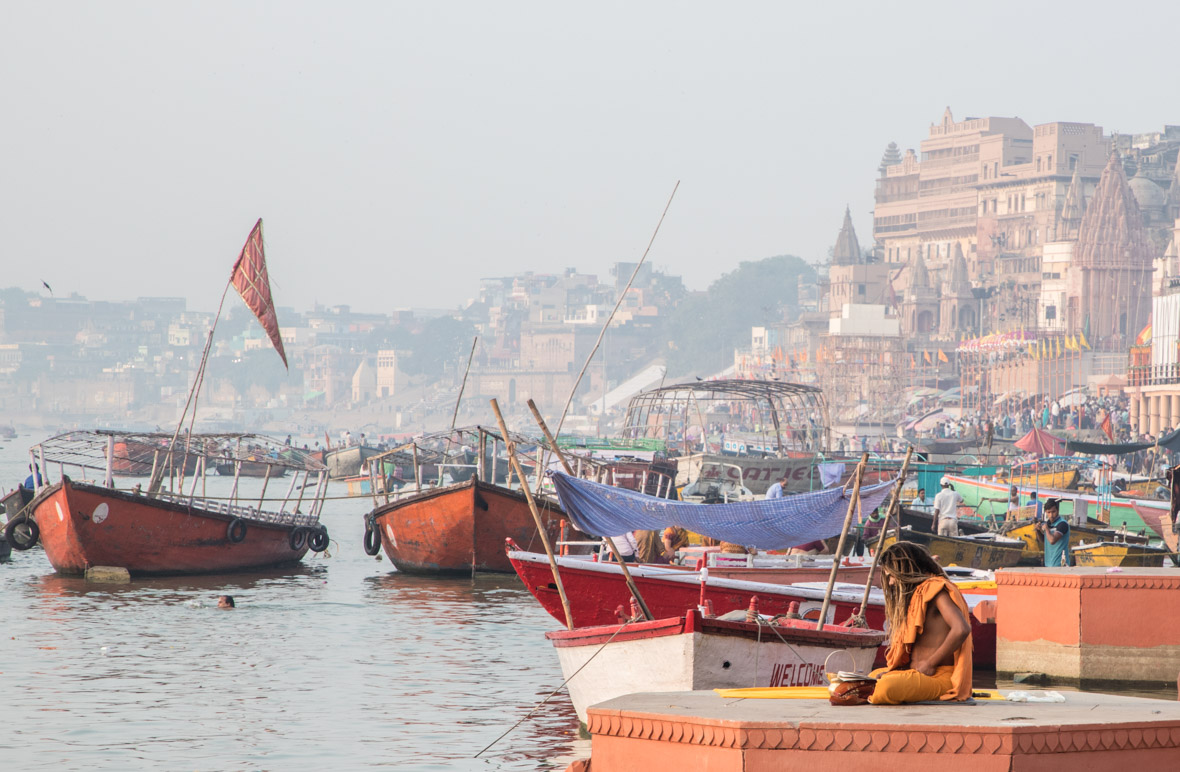
Being such an ancient city, Varanasi has been demolished and rebuilt countless times over the years. The city as we know it now was primarily built by the Maratha Empire in 1700 A.D. They built the iconic ghats, or the riverfront steps leading to the banks of the Ganges River, which allowed people to easily access the river for religious rites, cleaning, and bathing. Although the ghats have fallen in disrepair over the years, they continue to be the center of cultural and religious activity in the city, with people all over the world making the pilgrimage to Varanasi just to experience them in person.
作为一个如此古老的城市,瓦拉纳西在漫长岁月中经历过无数次的拆毁和重建。我们今天所看到的这座城市,主要是由马拉塔帝国(Maratha Empire)建立于公元 1700 年。当时他们还建造了具有标志性的河坛(ghats),也就是通往恒河河岸的台阶。这些河坛便于人们走进恒河举行宗教仪式,或者进行清洁和沐浴。虽说如今的河坛早已年久失修,但它们仍然是文化和宗教活动的中心,许多人会专门到瓦拉纳西朝圣,只为了去参观下这些河坛。
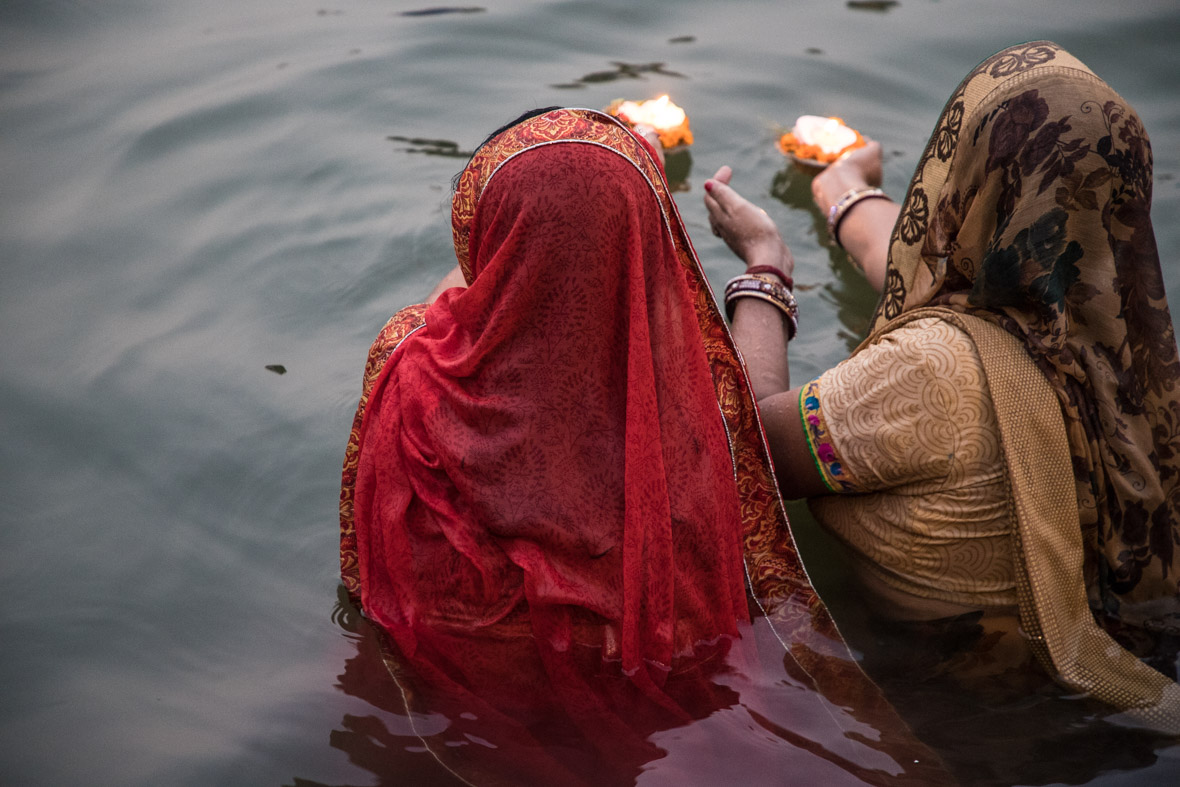
Activity at the ghats starts in the early hours of the morning. Devotees descend the steps to bathe in the Ganges. The river is worshipped as the holiest one in Hinduism and bathing in it is believed to rid one of all sins that one might have committed in life. In addition to taking a dip in the river, devotees also visit to pray with offerings of flowers and oil lamps. Alongside these devotees, Hindu priests perform their own daily prayers. While their offerings look similar to the earlier devotees, the incantations are much more complex.
黎明之时,人们已经聚集在河坛活动。信徒们迈下台阶,在恒河中沐浴。恒河被当作是印度教中最为神圣的一条河,人们认为在恒河中洗澡可以消除所犯下的一切罪恶。除了在河中沐浴,信徒们还向恒河献上花朵和油灯,作为贡品。而在信徒旁,印度教祭司也会进行他们的每日祈祷。虽然他们的贡品看上去与之前普通信徒的进贡的差不多,但他们所念的咒语却要复杂得多。
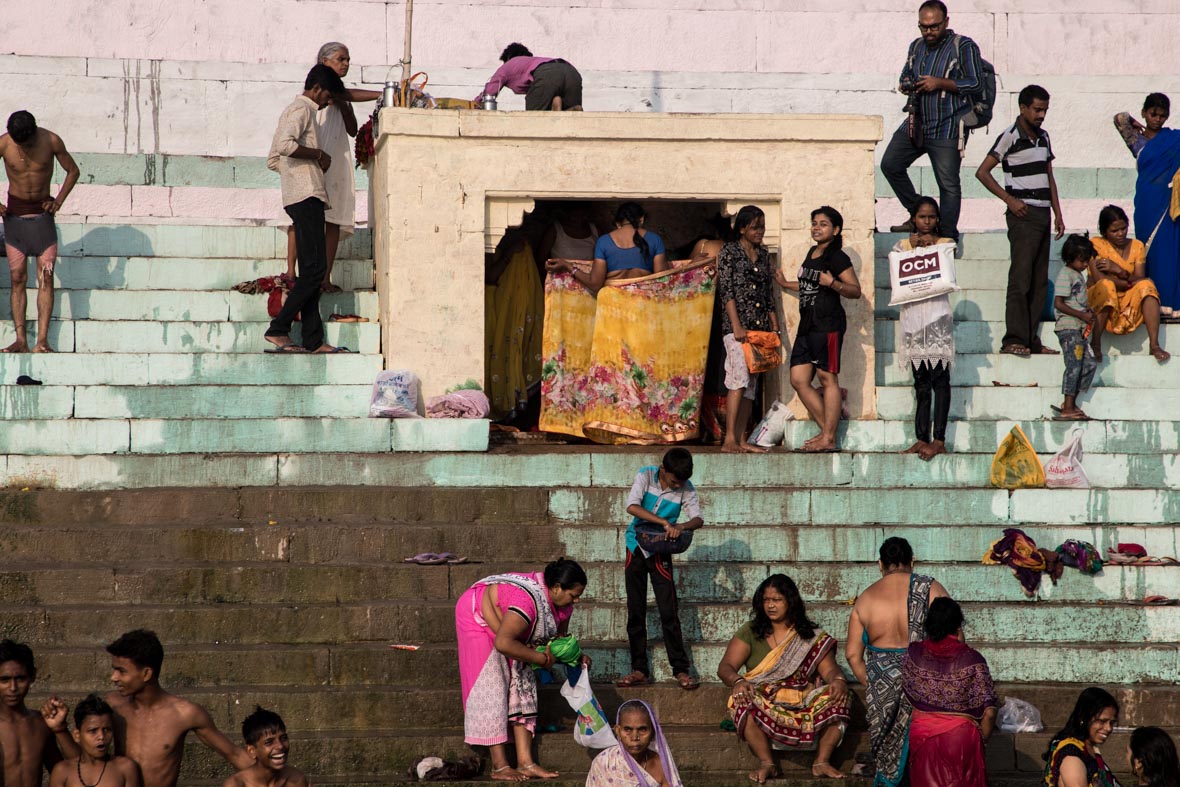
Varanasi also offers an interesting look at the contradicting ideals around shame and nudity in India. Conservative-minded individuals who might frown upon public displays of affection or revealing clothing like short skirts or low neckline blouses won’t hesitate to publically bathe and change clothes along the ghats, even with hordes of photographers all around.
有趣的是,在圣城瓦拉纳西,还能看到印度人对廉耻和裸体相互矛盾的观点。思想保守的人们对公共场合亲密行为皱眉不已,对短裙或低领衬衫等暴露衣着也会反感,但他们同时也会毫不犹豫就跳入恒河里沐浴,即使周围都是摄影师也毫不在意。
The ghats also reveal an interesting perspective on how some Hindus perceive certain devotees and their motives for visiting the city. Tongue-in-cheek phrases are inscribed and penned in Hindi along the walls, urging devotees to think rather than blindly follow. One phrase takes a dig at people who sin without hesitation and return to the Ganges to bathe and be absolved of them.
河坛还为人们提供了一个有趣的视角,以观察信徒和他们之所以造访这座城市的动机。墙上随处可见涂写的警句,就敦促着信徒去思考,不要盲目地随大流。而有条短句就讽刺了有些人总是不经思考就做坏事,然后一次次回到恒河里洗澡,以期洗清自己的罪行。
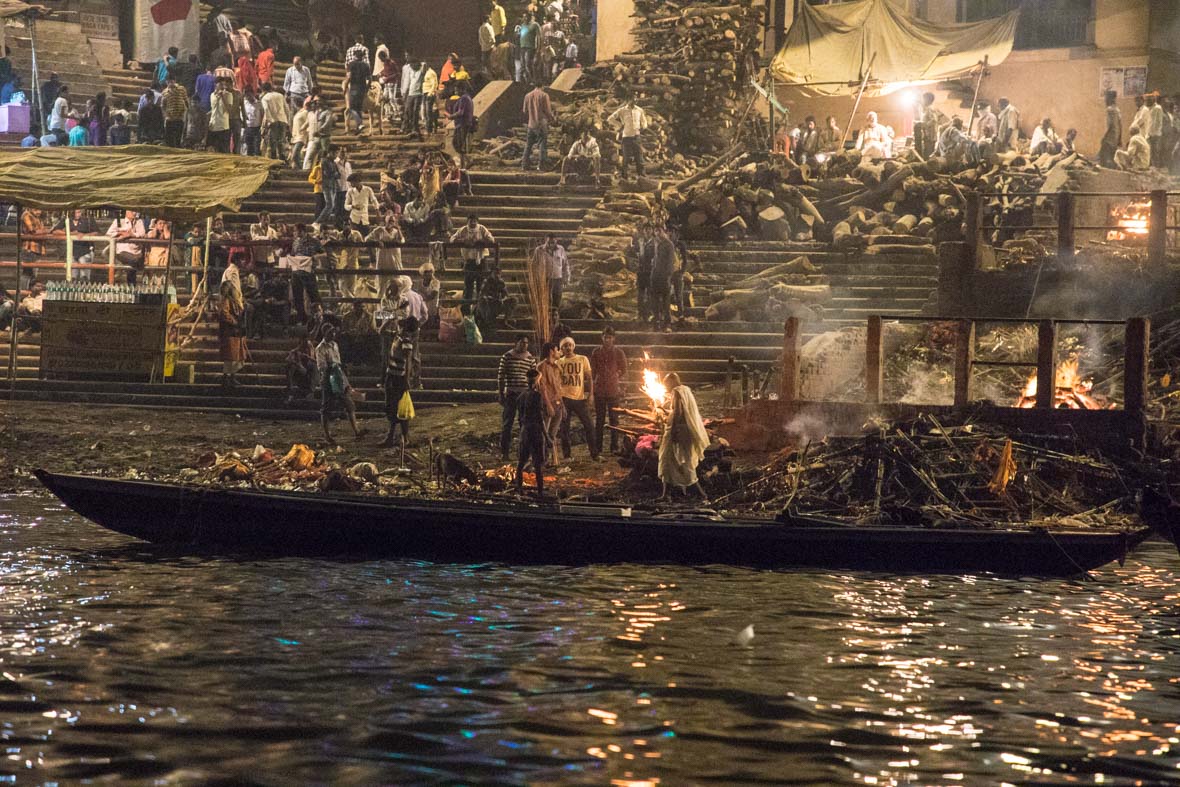
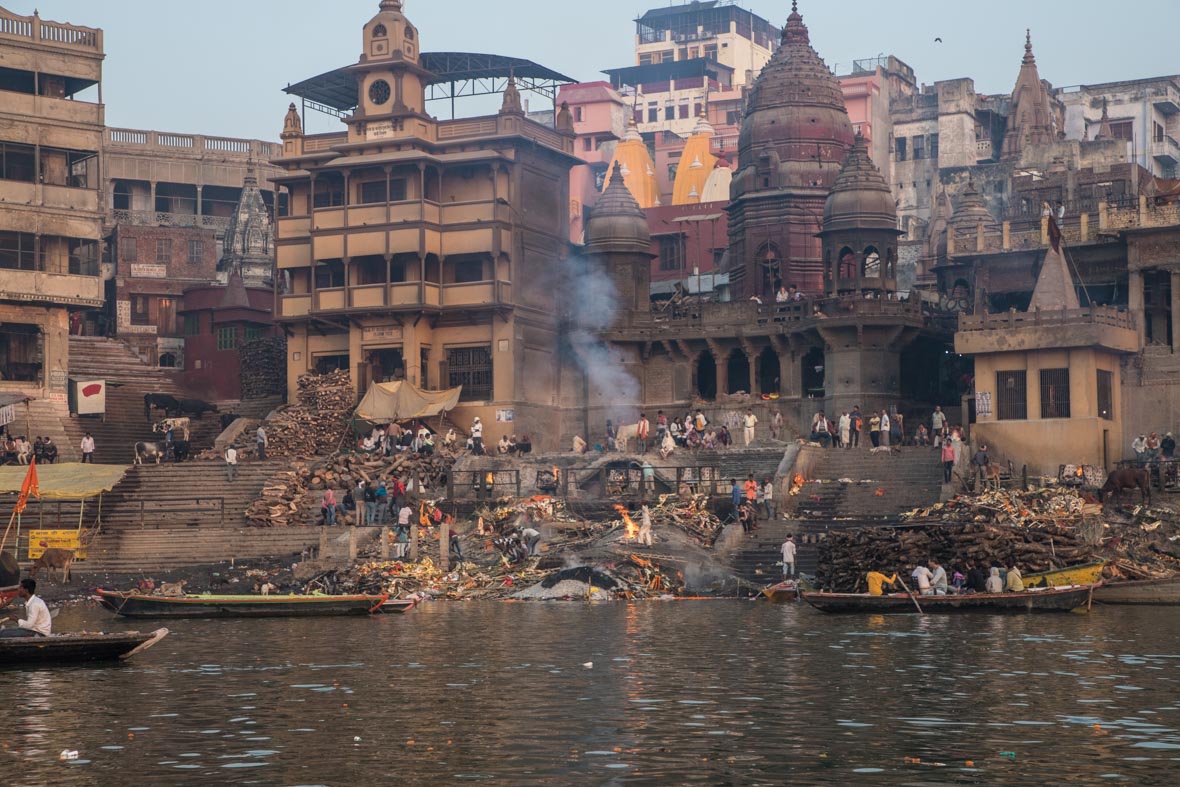
The ghat that arouses the most curiosity, especially amongst non-Indians, is the burning ghat. It’s known as the Manikarnika Ghat, and it’s where more than three hundred cremations take place every week. The Dom community, a low-caste community of corpse burners in Varanasi, carries out the cremations day after day. Their work never stops, not even for a second; even during times of festivities, the cremations continue on.
Dying in Varanasi and what it means to Hindus is a concept that confounds most. A Western mind, familiar with Abrahamic religions, is used to thinking of death as finality. However, in Hinduism, life is believed to be a circle of birth and death. A soul keeps on taking births so as to bear the fruits and punishments of actions of past life. It goes on until the soul’s ledger of both is balanced, which might take all eternity. One of the ways to be free of that is to die in Varanasi and have the ashes immersed in the Ganges after the cremation. This is why dying in the city is an important affair and the cremations seem endless.
在外国游客看来,最让他们好奇的,通常都是那个用来进行火葬的河坛,它被称为马尼卡尼卡河坛(Manikarnika Ghat)。每星期,这里都会举行 300 多次火葬仪式。“Dom”社群——圣城瓦拉纳西中负责焚尸的一个低种姓社群,负责执行火葬仪式。他们的工作忙得不可开交,甚至连一秒钟的休息时间都没有。并且即使在节庆日活动期间,火葬仪式也会照常举行。
而死亡在瓦拉纳西及其对印度教徒的意义,则是最令人困惑的部分。在西方思想中,人们熟于亚伯拉罕诸教(Abrahamic religions),死亡往往被视为终结。然而在印度教中,生命则被认为是生与死的循环。一个灵魂会不断重生,去承受前世应得的善果和恶报。这样的轮回循环会一直持续,永恒不灭,直到灵魂帐目中的功过相抵。这也是为什么“死亡”在这座城市有着如此重要的意义,而火葬仪式也永远不会停止。
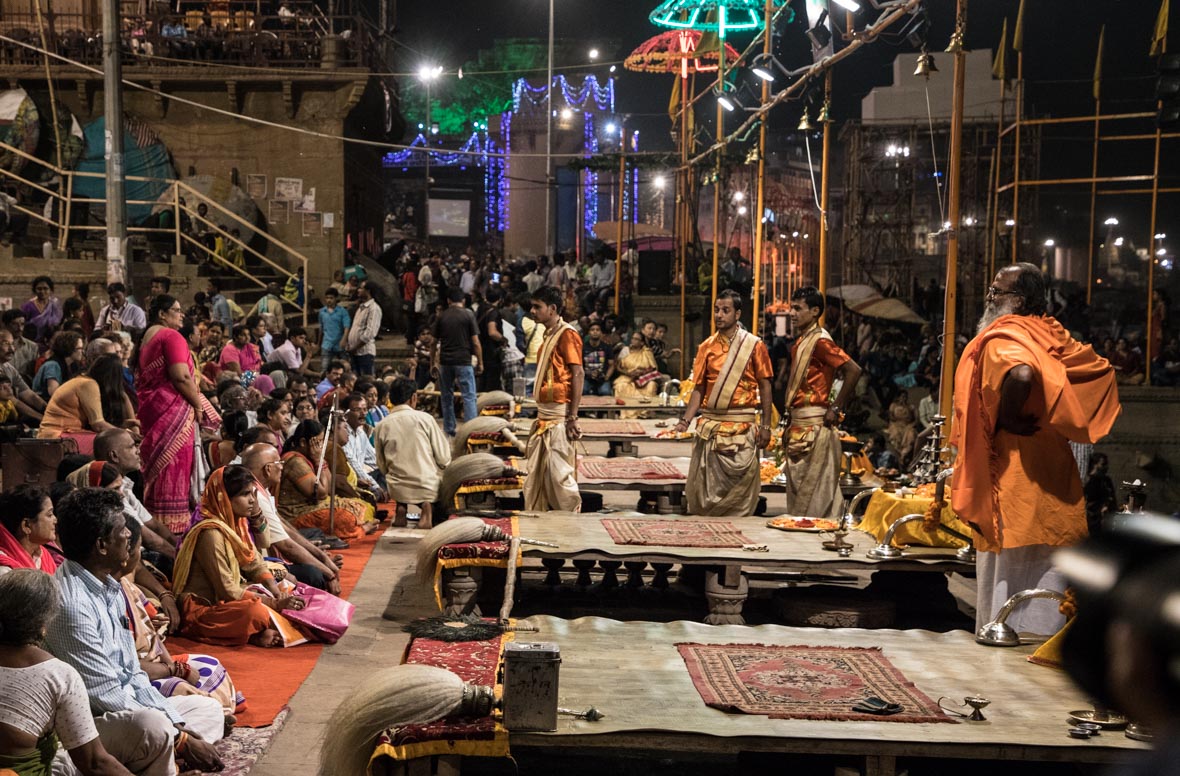
As the day draws to a close, tourists start gathering at the Dashashwamedh Ghat. Every day, between 6 to 7 pm, five young priests simultaneously perform what is known as Ganga Aarti, a prayer to the Ganges, and the rituals go on for a little over an hour. As the prayers conclude, the day at the ghats is officially over, but locals will remain along the ghats to relax, play musical instruments, and sing Bollywood songs.
随着夜幕降临,游客开始聚集在达萨斯瓦梅朵河坛( Dashashwamedh Ghat)。每天晚上六点到七点之间,五名年轻的祭司会同时表演“恒河暮祭”(Ganga Aarti)。这是对恒河的祈祷,整个仪式持续一个多小时当祈祷结束的时候,河坛一天的活动才算正式结束。但人们还是会一直逗留在河坛沿路。当地人喜欢在这里闲逛,演奏乐器或演唱宝莱坞歌曲。
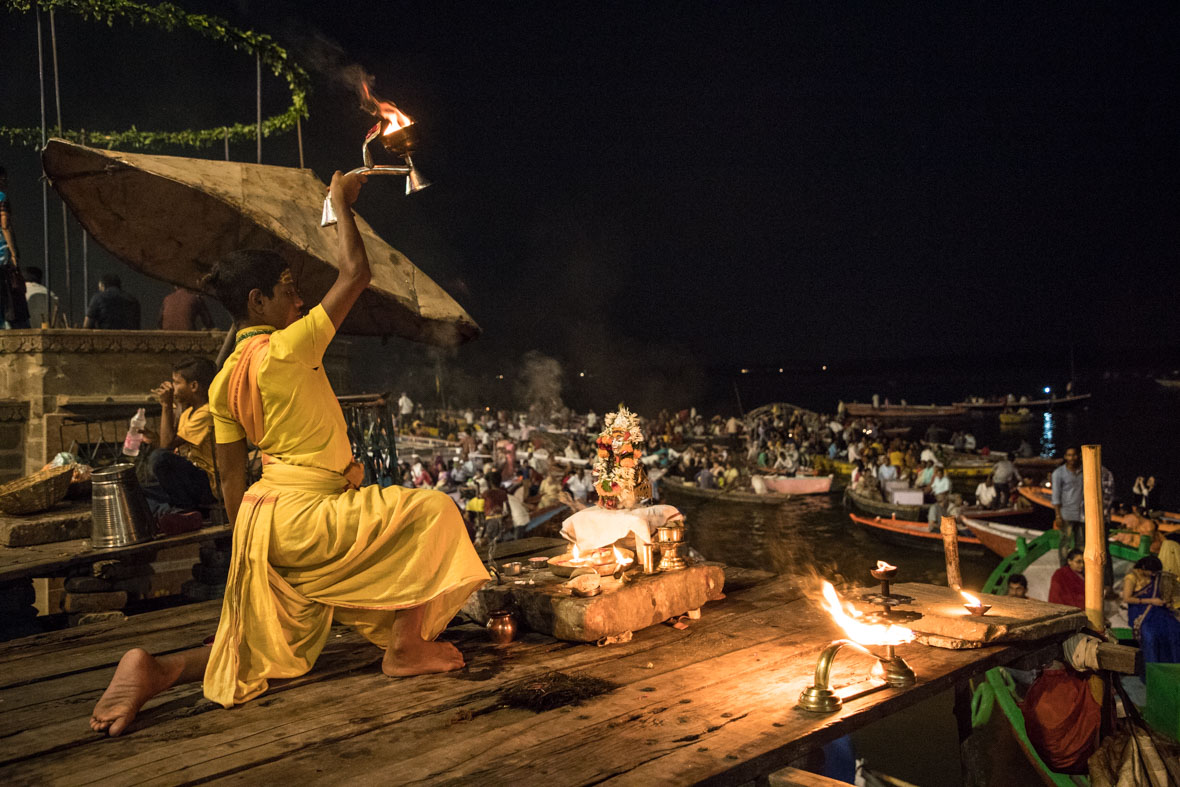
Varanasi is a place that is hard to make sense of, for both Hindus and non-Hindus. It takes time to begin fathoming the system at work beneath all the apparent chaos. Reading about Varanasi prior to visiting might walk you through the history of Varanasi and what Hinduism is all about, but the only way to truly understand the multilayered city is to experience it in person.
As philosopher Karl Marx once said, “Religion is the sigh of the oppressed creature, the heart of a heartless world, and the soul of soulless conditions. It is the opium of the people.” However, perhaps religion should be seen as more than simply a provider of temporary comfort. These holy rituals and ceremonies are a preservation of traditions that perpetuate cultural values and ideologies – essentially, they’re celebrations of life. Nowhere is this more apparent than at the ghats of Varanasi.
无论是对印度教徒还是印度人来说,瓦拉纳西都是一座令人捉摸不透的城市。你往往需要在这里生活一段时间才能明白,在混乱的表象之下,这里依然有一种系统性。在你到访瓦拉纳西之前,先读一本相关的书籍,可以引导你去了解它的历史和宗教;但若要真正感受这座城市的魅力,唯一的办法就是亲自去体验一下这里的河坛。
宗教,哲学家卡尔·马克思(Karl Marx)曾说,“它是被压迫生灵的叹息,是无人性世界中的人性,亦是无灵魂之境中的灵魂。宗教是人民的鸦片。”但是,它或许不仅应被认为是短暂的慰藉。宗教中这些神圣的典礼和仪式沿袭了传统,使其文化价值和意识形态得以留存——本质上来说,也是对生命的庆典。而这一点,恰在瓦拉纳西的河坛上表现得淋漓尽致。
Contributor & Photographer: Garima Garg

